A Colossal Sculptor’s Modest Beginnings
Anish Kapoor's early pigment sculptures on show in New York. Plus, a gallery looks back on 40 years of seminal art and more art highlights.
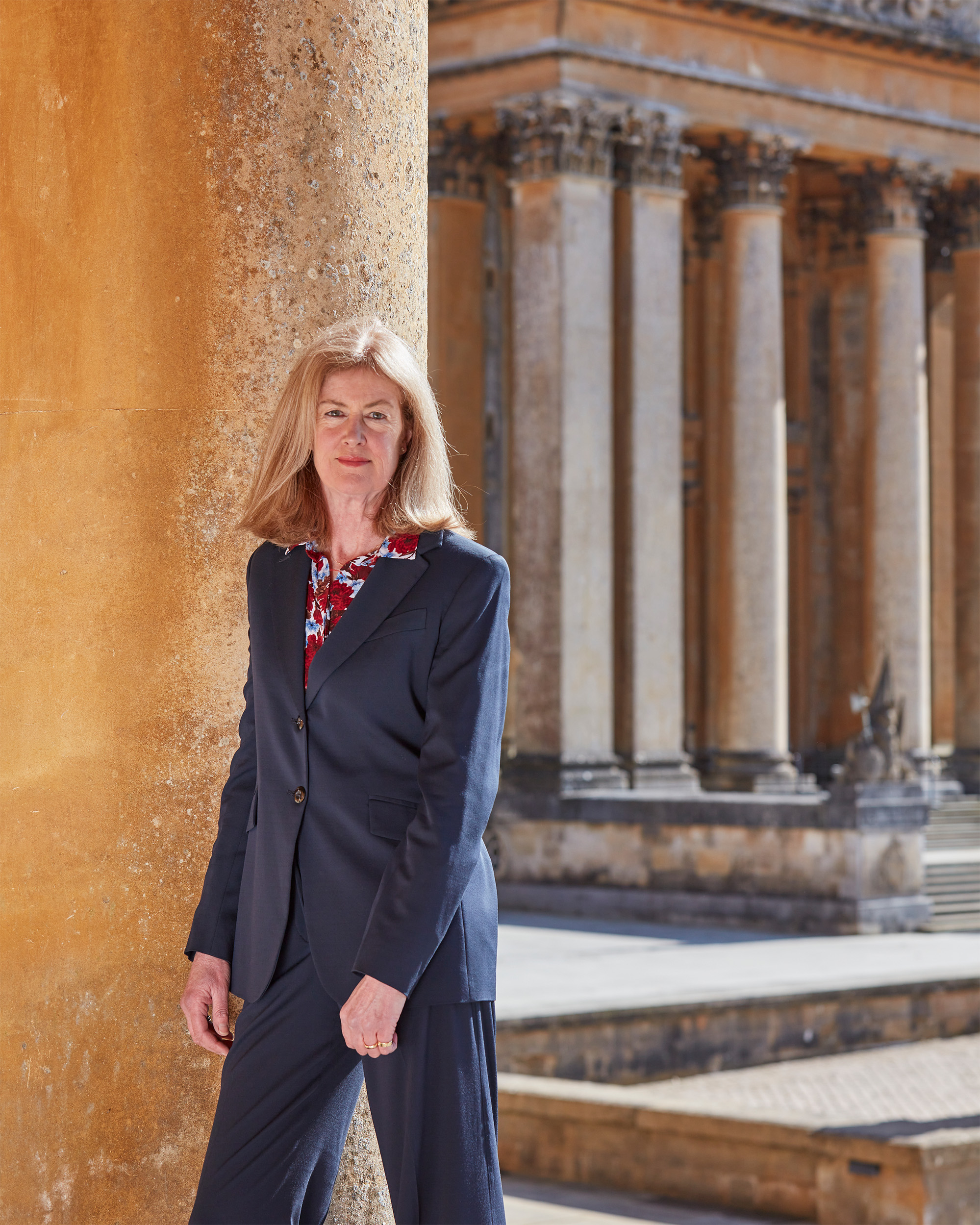
Few homes in the UK have the grandeur and layered history of Blenheim Palace. From its tumultuous early days to the birth of Winston Churchill, Blenheim has stayed in one family’s hands for centuries. On this episode, Dan speaks with Lady Henrietta Spencer-Churchill, whose family looks after this resplendent country house. The two discuss her new book from Rizzoli, Blenheim: 300 Years of Life in a Palace, the inside story on Winston’s accidental birth there, and so much more.
TRANSCRIPT
Lady Henrietta Spencer-Churchill: Well, it certainly doesn’t look like a castle or a castle as Americans… Americans often say Blenheim Castle. And I say, “Actually, no, it’s not a castle.” There’s no castellation there. It doesn’t look like a castle, but it does look like a palace. And if it was Blenheim House, it would rather demean the property, to be honest, because it’s a huge place and it does warrant the word palace, to be honest.
Dan Rubinstein: Hi, I’m Dan Rubinstein, and this is The Grand Tourist. I’ve been a design journalist for more than 20 years, and this is my personalized guided tour through the worlds of fashion, art, architecture, food, and travel, all the elements of a well-lived life.
As an American, the term English country house always makes me smirk. To us, it means a little cabin somewhere to get away from city life. To the British aristocracy, however, it’s so predictably self-deprecating in a way. It means an enormous mansion with hundreds of rooms, grand gardens, working farms, and stately decor that would rival the royal residences of just about any other country on earth. But in England, there is one country house that is so grand, so stately, it’s the only one in the UK that has the privilege of using the title palace without being royal, Blenheim Palace.
Built in the early 1700s near Oxford and designed by Jonathan Vanbrugh and Nicholas Hawksmoor, a protege of Christopher Wren. It was called Blenheim because the land was awarded to John Churchill for his victory at the Battle of Blenheim during the War of the Spanish Succession against the dastardly French and Bavarians in what is now Germany. Created in the English Baroque style with a landscape by the famed Capability Brown, like many of these enormous 18th century creations, had a tumultuous history in its early, days and for hundreds of years, until today, has been looked after by the Churchill family.
Today, it’s known as the birthplace of another famous Churchill, Winston. But as you’ll learn today, that was something of a complete accident. And an even younger generation today knows it as the place where one of the Bridgerton series was shot, among many other thrillers and costume dramas. The house is looked after by my guest today, Lady Henrietta Spencer-Churchill, the eldest daughter of the 11th Duke of Marlborough, and a noted interior designer and design book author herself.
For the first time in quite some time, Blenheim Palace has been definitively photographed for a new book by Henrietta from Rizzoli, out now called Blenheim: 300 Years of Life in a Palace. I caught up with Henrietta from [inaudible 00:02:31] to discuss her incredible new book and the hidden spots and incredibly grand rooms it covers, the dramatic history of the palace itself, whether or not she’s seen a ghost on the premises, the inside story on how Winston Churchill came to be born on the property, and much more.
Congrats on this book. It’s incredible. We’re speaking before it’s released, of course, and I’ve seen previews and it’s quite the tome and quite beautiful. How did this get started? What inspired this?
Well, I’ve worked on many books with Rizzoli over the past. My first book published with them was in 1992, so most of them are design related, but they all have a historical background element to them, which is the part I enjoy because a lot of the houses I work on are historic homes. So I like to do the research into the historic background of the homes and the period and the detail. And actually, Charles Miers, who’s the president of Rizzoli, has been badgering me, shall we say, for many years, to do a serious book on Blenheim. And my life is very busy, what with my interior design business and doing a lot of things at Blenheim anyway, so it was just a question of finding the time. There’s never a good time, but I sort of enjoy a challenge.
When was the last time a serious volume like this was produced?
Probably never. I have done a book on Blenheim previously myself, about 20 years ago, but it was much more of a personal portrait, so it was sort of my recollection. So it did have some history into it, but this is much more serious. So it covers everything from the people to the architecture, to the park and garden, the interiors. And when I say interiors, it’s all the details, everything from paintings to China to sculpture, bronzes, fireplaces, plaster work, so it’s quite intensive.
And then we go into logistics because a lot of people like to know about how a big place like that actually works and how it’s changed over the centuries, which it obviously has a lot, from having many hundreds of servants and staff down to being now sort of much more run like a business. So it has changed dramatically, in particular, I would say in the last 50 years. So it just seemed interesting to put all that down on paper, and it’s been wonderfully, wonderful photographic illustrations, mostly done by Hugo Ritz Thomas, and then some by our in-house photographer, Pete Seaward.
And the topic of Blenheim is so massive, but I’m wondering, before we get to all of that and all of the history, what are your first memories of the palace?
Well, actually, people sort of wrongly always assume that I grew up there. In fact, I didn’t because of the palace being handed down from generation to generation. When I was a child, obviously my grandfather was still alive, so he was living there. And my father was, as people, the eldest son is always groomed to do, he was very much involved in running of the place.
But in those days, it wasn’t so much a business, it was very much we’d have a land agent or a estate agent, and it wasn’t nearly so commercial as it is now. In fact, I think for my grandfather’s time, it was quite an enjoyable process because he didn’t have hundreds of thousands of visitors trampling all over the place, which, of course, we need. And he was very into his sporting activities, hunting, shooting, riding, whatever, big weekend social parties.
My mother and my father, well, when they got married, they bought a very pretty Georgian house about five miles away. So my father was living there and running his own farm, actually. And he’d had an army upbringing, so he was very disciplined and knew what his life’s work was cut out to do. Then my grandfather, sorry, died in 1972.
So although, as children, we’d spent a lot of time there, we’d never actually lived there. So it was after then that we had actually quite a bizarre life. We spent six months in the Georgian house in the summer months to have the privacy, and then six months in the winter at Blenheim because my father enjoyed the sporting activities.
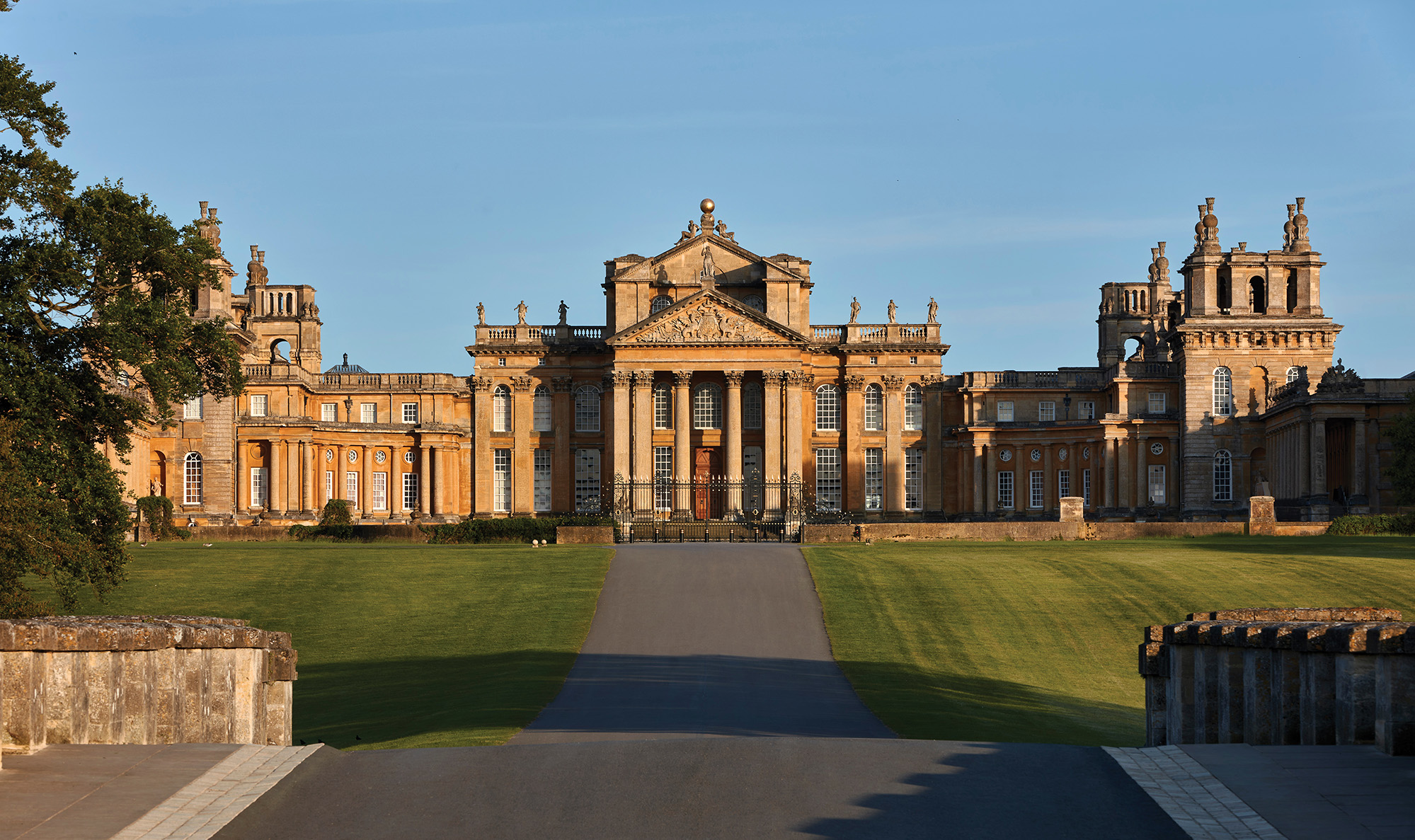
And to someone who didn’t really grow up there, but what was your impression when you kind of first laid eyes on it? Do you remember?
Well, I suppose I went there probably on a weekly basis with my father. And as children, my brother and I, we were encouraged to go and help. We’d go and help the gardener pick fruit and vegetables. At that time, there was a small gift shop, but we’d go and help serve ice creams and serve in the gift shop. So we actually spent much more time outside than inside. I was rather terrified of my grandfather. He was a lovely man, but he didn’t have a lot of patience for young children, I don’t think. Actually, one of the most amusing things we did learn to do was water ski on the lake.
Oh, wow. Okay.
Yeah. Yeah.
What a way to learn.
Well, exactly. Although it was cold, we had to wear wet suits.
I’m sure you did. If someone is, if you meet someone, especially maybe in the States and they’ve never heard of Blenheim before, and you just have to explain to them, say, at a dinner party, how would you describe it?
Well, it’s essentially, it’s a baroque palace, and it’s the only private palace in England outside one of the royal palaces. And that’s largely because the Royal Park of Blenheim was a hunting ground for the royal family and its 2,000 acres encased in a wall. It is very grand. One of the reasons it’s so grand is because, firstly, Baroque architecture is quite austere and grand.
And secondly, John Churchill, who was my great ancestor, who became the first Duke of Marlborough, he was the one who acquired, by act of Parliament, Blenheim as a gift from Queen Anne and the nation. And when he went about building the house, he wanted something to equal Versailles because he’d fought Louis XIV in the Wars of the Spanish Succession. So he thought, right, if we’re going to build a palace or something, which is a gift from the nation, let’s make sure it’s big enough and important enough to equal Versailles.
How does it, because that’s part of, from a design point of view, I’m curious about the title of palace because it’s the only… Is it the only non-royal palace?
Yes.
Why were they allowed to call it that? Was it because the land was a royal hunting ground before?
I believe so, it’s never… Well, it certainly doesn’t look like a castle or a castle as Americans… Americans often say Blenheim Castle. And I say, “Actually, no, it’s not a castle.” There’s no castellation there, it doesn’t look like a castle, but it does look like a palace. And if it was Blenheim House, it would rather demean the property, to be honest, because it’s a huge place, and it does warrant the word palace, to be honest.
Sure. When it came to finding an architect, forgive me, like John Vanbrugh?
Vanbrugh. Yes.
Vanbrugh is how you pronounce it. When it came to the architect, John Vanbrugh, he was, from what I read in the book, he sort of was a self-taught architect and a friend of the family, and quite the card, as it sounds. Tell me about him and how that really-
Well, he was ostensibly initially renowned as a playwright, very talented, very great aesthetics. And he had built Castle Howard before Blenheim. And you can see a lot of influences from Castle Howard in Blenheim. But his great partner was Nicholas Hawksmoor, who was much more qualified than Vanbrugh was. And it was very much a collaboration between John Vanbrugh, who I think had the big picture and the big ideas, and Nicholas Hawksmoor. So I don’t think anything would’ve happened without Hawksmoor and all equally the other very talented craftsmen who worked on the property.
Interesting enough, Sarah, his duchess, she knew she would’ve been managing this project because he was still in Europe fighting. So it was very much left to her to deal with all the contractors, Vanbrugh, who eventually she fell out with. But she wanted to employ Christopher Wren because she wanted a much more modest, pretty property. And I think that was probably the only way John got his way over Sarah.
You wrote in the book that, oh, gosh, that she was on top of every detail. In many ways, she was the worst possible client an architect or interior designer could have. Tell us about that process. What was the brief, by the way? She wanted something pretty, but then she didn’t get it. She got this rather dramatic fellow and business partner. And what was that process back and forth like that you know of?
Well, having read quite a lot of the correspondence recently and actually in the past, yeah, there’s a lot of antagonism going on between that relationship. But she was very strong and had very clear mind as to what she wanted and what was right and what was wrong. I mean, she really was way ahead of her time and I think she felt it also her duty to manage the project as John wasn’t around and she knew what he wanted. And even after he’d died, she made it her life’s work to finish the palace to a standard he would’ve wanted and as a fitting tribute to him. So having hated it initially, I think at the end of it, she was quite proud and stayed, hang onto it for a long time because she outlived all but one of her children and some of her grandchildren.
Oh gosh. Aside from being maybe a tricky client, what do we know about her? I mean from your own point of view what your take on her as a woman is, because she is such a big figure in history and her relationship to the Queen and she was quite influential. How would you describe her? If she could magically appear and you could spend an afternoon with her, what would that kind of be like, do you think?
Gosh, I wish I’d known her. I think we wouldn’t stop talking for weeks on end, to be honest. I now have a huge admiration for her. Obviously, perhaps sometimes her too strong will got the better of her, which is why she ended up falling out with Queen Anne. But nonetheless, being in that position when in those days, it was very much a man’s world. And she had a lucky break, she worked her way up through the court circles and was friendly with Queen Anne, and I guess it was because of that and mixing with a lot of influential people and politicians, et cetera. So not only did she build up a huge portfolio of properties and wealth in her own right, but she was also managing those of her children and grandchildren. So she very much controlled the purse strings and everything.
And in terms of the palace, in terms of its scale, do you have statistics memorized? I’m sure, how many rooms are we talking about here in total?
Well, how do you describe rooms? I mean there’s between two or 300, but some of them are usable and some of them are not so usable. And some of them in the attics and haven’t been used for many years and some of them are off little secret staircases, so it’s very difficult to quantify the number of rooms. I think what a lot of people always assume is it’s a very austere, daunting house inside, but actually it’s not. The rooms are of massive proportions, especially on what I’d say is the public side. So you’ve got 30 foot plus ceilings, but they’re all perfectly formed, the right proportions. Doors are in the right places, everything’s beautifully considered. But in fact, the way it’s furnished in particular on the private side and on the public, it’s very welcoming. I think people are always surprised by that. They arrive and think, “Oh actually, this is quite lovely and it’s quite welcoming.”
And if someone arrived and let’s say I met you there and I’ve never been so, and I said, “Let’s do a brief tour of the palace,” where would you kind of start with someone?
Well, I think normally one would do the public side first. So you enter up those grand steps through the portico there and into the Great Hall which has a wonderful ceiling which is painted by Sir James Thornhill. I mean that, it’s not like your average hall. It’s very much a place which is now used for entertaining, but it would’ve been where all the guests came and gathered before being taken off to other rooms. And then you do a tour, which is predominantly on the south side of the house through the state rooms. So the grander rooms, which are all enfilade, which means each room runs from one to another. So there’s sets of double doors that effectively go from the east side of the house to the west.
In the middle of that south side, you have the saloon, which is effectively a grand dining room. But throughout the periods, which is also an interesting take, which I talk about in my book, depending on which Duke and which generation, it’s been used for different occupations. So during the Seventh Duke’s reign, which was the Victorian period, it was very much used as a drawing room, so full of lots of plants and overstuffed sofas and chairs. Whereas now, it’s very much a grand dining room used for entertaining, but has multi-functions, you can have six tables of 12 or you can have one long table. It can just be for receptions. So it’s very functional.
And then I guess one of the pièce de résistance is the long library, which was originally built as a pitch gallery. So that runs the whole of the west side of the house and now overlooks what are the water terrace gardens. We’ll talk a bit about the park and gardens a bit later because that’s changed immensely. And so yeah, so this long library runs a whole length of the house and overlooks the water terraces and at one end, it has a fabulous Willis organ, which the Eighth Duke installed actually with money from his second wife, Lillian Hammersley, who was an American.
Of course. And where would you end up?
Well, if you’re on the public tour, you would end up now, we just recently finished its restoration looking in the chapel, which is actually one of my favorite rooms. And I’m so pleased, really we did it in memory of my father with help of our foundation, the Lennon Foundation, the UK and the US one. And there’s a fabulous Rysbrack monument in there, which Sarah had this built after John had died in his memory. And it basically features her and him and their two sons, both of whom died at a young age. And the daughters don’t feature, even though the family went through the female line, the inheritance went through the female line.
Oh gosh. And was the chapel there from the very beginning or was it added later?
No, she added it after he died. I think it was always planned but was never completed. So John sort of saw most of the house completed and they lived on the east wing, which even today is the private side of the house. So if I was going to take you on the private side, which is also partially open to the public because for inheritance tax reasons, we have to open it for so many days a year. And so that is the area that they first occupied and that today is still very much the family side of the house.
(SPONSOR BREAK)
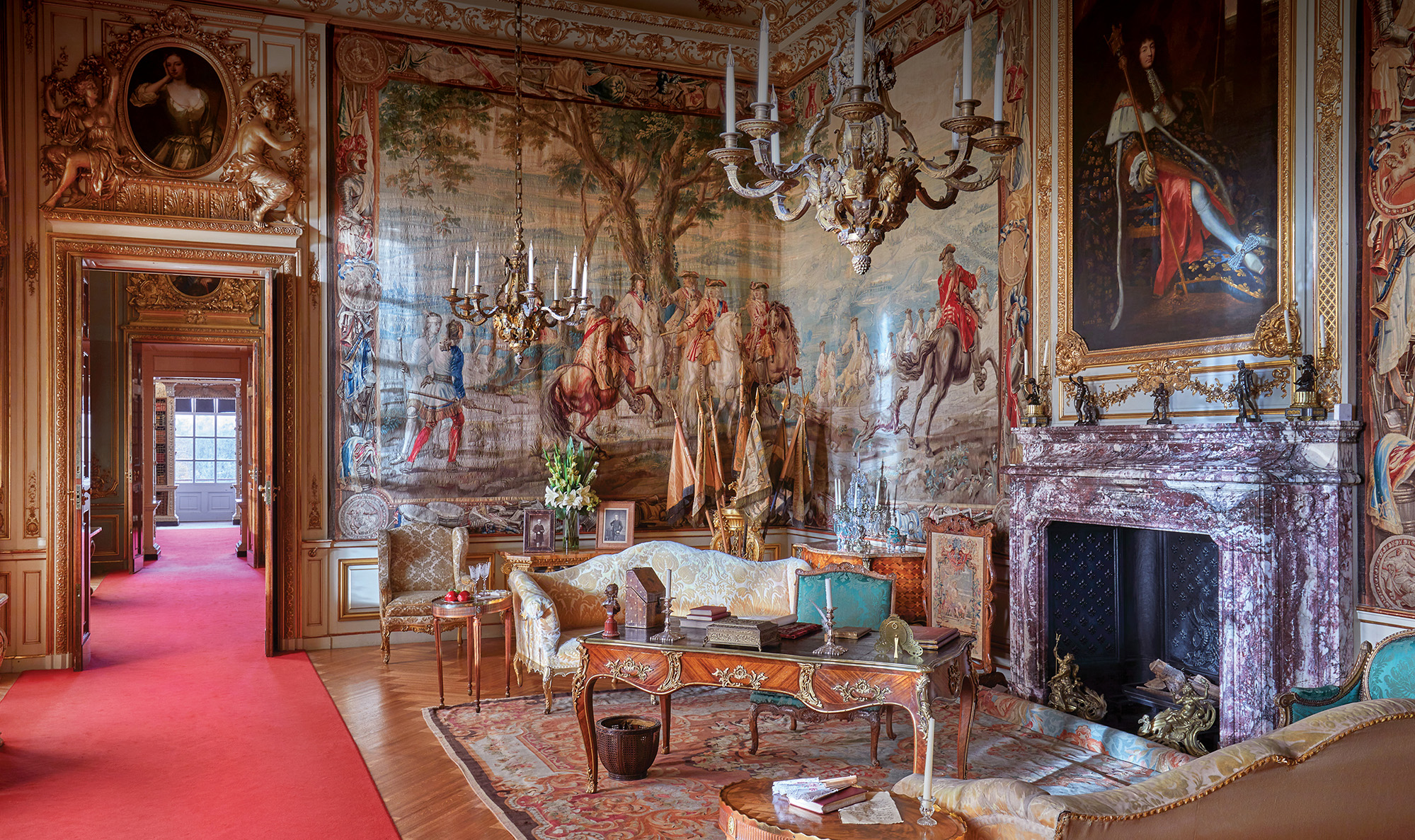
And with hundreds of years of history and obviously the first family who built it, is there another generation you believe is probably the most influential when it comes to the Blenheim that we still have today?
Yeah, very good question. And yes, I tend to very much focus on, well, the Fourth Duke. So we’re now talking about around the 1750s, 1760s. And he and his wife, Caroline, they were really the first family to live in Blenheim like a family home because Henrietta who became the second Duchess after, as they had no surviving male heirs, didn’t live there or partially. And that was largely because her mother was still there, Sarah in control. And then the third Duke Charles, he was the eldest son of Earl Spencer just to put that in perspective. So it was their eldest son, Earl Spencer who became the Third Duke of Marlborough. And their second son, Charles, who became Earl Spencer, who Princess Diana and the royal family today is descendants of. So going back to the Fourth Duke, so he inherited at the age 19 and with a huge dowry, a huge amount of money, because he was left around, I think it was half, £500,000 pounds, which in those days was a huge amount of money.
Gosh, yes. A lot.
But he was very smart, had a lot of aesthetic to, and so he was the one who employed Capability Brown, so spent a lot of money and time and effort remaking the landscape, basically. So, it was Capability Brown who put in the Great Lake and that was interesting because Vanborough had designed the Grand Bridge to go over a canal, a stream canal, which was already there. But the bridge looked really slightly out of proportion with just this small stream running through it. And of course when the lake was built, really came into its own. So it’s almost like Vanborough had this vision of someday there being a lake there.
And obviously Capability Brown is known as the great English gardener, the name everyone looks up to. When you walk the grounds today, how does it make you feel? How do the grounds speak to you? What’s your impression of them?
They’re very special actually, and there’s areas, there are many different areas. So actually the north, not the north actually, well the sort of east side of the park and the oldest part of the park is full of oak trees, which had been there long before the palace was built. You go up there and you wouldn’t necessarily know you were in the grandeur of Blenheim because it’s very overgrown, beautiful trees, ferns, lovely walk through the woodland. When you go back to the palace and further round to the west and north, then there you see much more the influence of Capability Brown, because it’s quite flat, funnily enough, the land around there so a lot of the undulation in the parkland has been created, it wasn’t natural. That was a lot of it by Capability Brown. I think the park is very much made by the trees, the woodlands and it’s natural, it’s not over fussy, it’s doesn’t have the grand formal gardens like somewhere like Versailles, it’s very much all about the parkland rather than formality.
Of course, we can’t forget to mention Winston Churchill and his connection there. I believe he was born there. Correct? He is, forgive me if I’m wrong, your grandfather’s cousin?
Yes. Basically, his grandfather was the seventh Duke, his uncle was the eighth Duke, and his first cousin was my great-grandfather, the ninth Duke.
Great-grandfather, okay.
To put that also into perspective, my great-grandfather, the ninth Duke was the one who married Consuelo Vanderbilt. That’s my American connections, which needs to say I’m very proud of, and we still have good connections with that. I’m actually on the board of the Newport Preservation Society in Rhode Island, which is where they built Marble House and the Breakers. It’s lovely to have that involvement and see that side of the family.
He was born there, if I’m correct? Do we know where was he born-
Well, it wasn’t planned.
Okay, that’s good to know.
His mother and father were spending the weekend there, it was a big weekend party organized by the ninth Duke, a typical English weekend party, there was hunting, shooting during the day and there was a big ball planned for the evening. The story goes either it was a sort of rumbling of the carriages over the cobblestones that brought the birth on early or it was her dancing too vigorously the night away. Anyway, yes, Winston was born premature. I think it was a few weeks premature, and he was born in a room which had belonged to, in previous generations, the resident vicar called Dean Jones, it’s a very modest little room, which is on the main floor in between the Great Hall and the Saloon tucked away and that’s where he was born. It’s become quite a thing that room. Actually, I recently renovated a few years ago and we’re lucky enough to have on display a lot of Winston Churchill’s original painting, so it’s very much his space.
Oh, that’s nice. How many people that come to the house kind of look to connect with him, do you think?
I mean yes, I think we’re very lucky that we have that connection as well because it’s certainly a great tourist attraction, as well as obviously the palace itself and the many events we put on, but I think in particular, a lot of Americans love that Churchill connection. We now also have a relatively new Churchill exhibition, which is down in the lower ground floor in an area which overlooks the water terraces. We illustrate his various aspects of his life from the wars to being a politician, etc. It’s a lovely event actually, it’s a lovely exhibition and very personal and we’re lucky enough to have had various members of his side of the family lend us things for the exhibition.
There’s also a garden, I think it’s near the Temple of Diana, correct? It’s sort of like the garden is somewhat of a tribute to him. Tell us about that.
Well, it’s actually quite modest. It’s really just a timeline of his life. It’s right by the Temple of Diana, which is where he proposed to Clementine, staying the weekend at Blenheim. It starts there and then there’s a path that sort of wanders through meanders through the grassland, in the centre of it there’s a fabulous bust by Oscar Nemon, the sculptor, and then in set there are slabs of stones depicting important dates of his life, like when he went to Harrow, when he went to the Army, when he first became Prime Minister, etc, and then through different times of the year it’s planted with spring flowers or summer flowers.
It’s not by any means at all grand, and by the way, nor is his grave because he selected to be buried at a family burial ground, which interestingly enough is not in Woodstock, the town of Woodstock, which is really where Blenheim is located, but it’s Bladon, which is the adjacent little town, and it’s an incredibly pretty but modest graveyard. He chose to be there so he could be next to his brother Jack and other members of the family rather than in Westman [inaudible 00:29:52].
Of course, speaking of the grounds for a second, tell us about the Grand Avenue, what it is and how it’s used today? I believe it went from an original approach to the palace to this sort of-
Well, there’s various avenues. The main entrance now is off the main road from Oxford to Woodstock, and that’s called the Hensington Gate that’s always been planted up with trees. We had elms, and you may remember, you are probably too young to remember, but there was a big blight of elm disease in England. I think it was in the seventies, because I do remember it. I remember my father and grandfather being incredibly upset about it because there were a huge amount of elms, which I think you’re talking about the Grand Avenue, which was planted from the north end gate, which goes all the way up to the monument and then towards the palace. Those trees were planted, essentially laid out as the troops had been in various battles, in particular the battle of Blenheim, so it was sort of significant to that particular time. A lot of those died but we have replanted them all with lime and plane.
There’s a lovely photo of sheep sort of grazing on the lawn as it is now, and it is a working estate, correct? I mean, tell us a little bit about that of tradition and how that lives on.
Well, basically the sheep act as lawnmowers, so they keep the grass down. We used to have cattle, we have a few cattle now, but it used to be very big, the farming enterprise. We have had a lot of tenant farmers, we still have a few, but farming is really not one of the big enterprises anymore because the land is used for so many other things, but the sheep are essential. It’s overrun with lambs at the moment, which is rather lovely. As I said, they’re really there to keep the grass down. Actually, quite recently the land agent, the land manager, he decided to get rid of a lot of the fencing, so the park is much more open than when it was before, which actually looks amazing because you really appreciate it as a parkland rather than as farmland where there were lots of fences separating into separate fields.
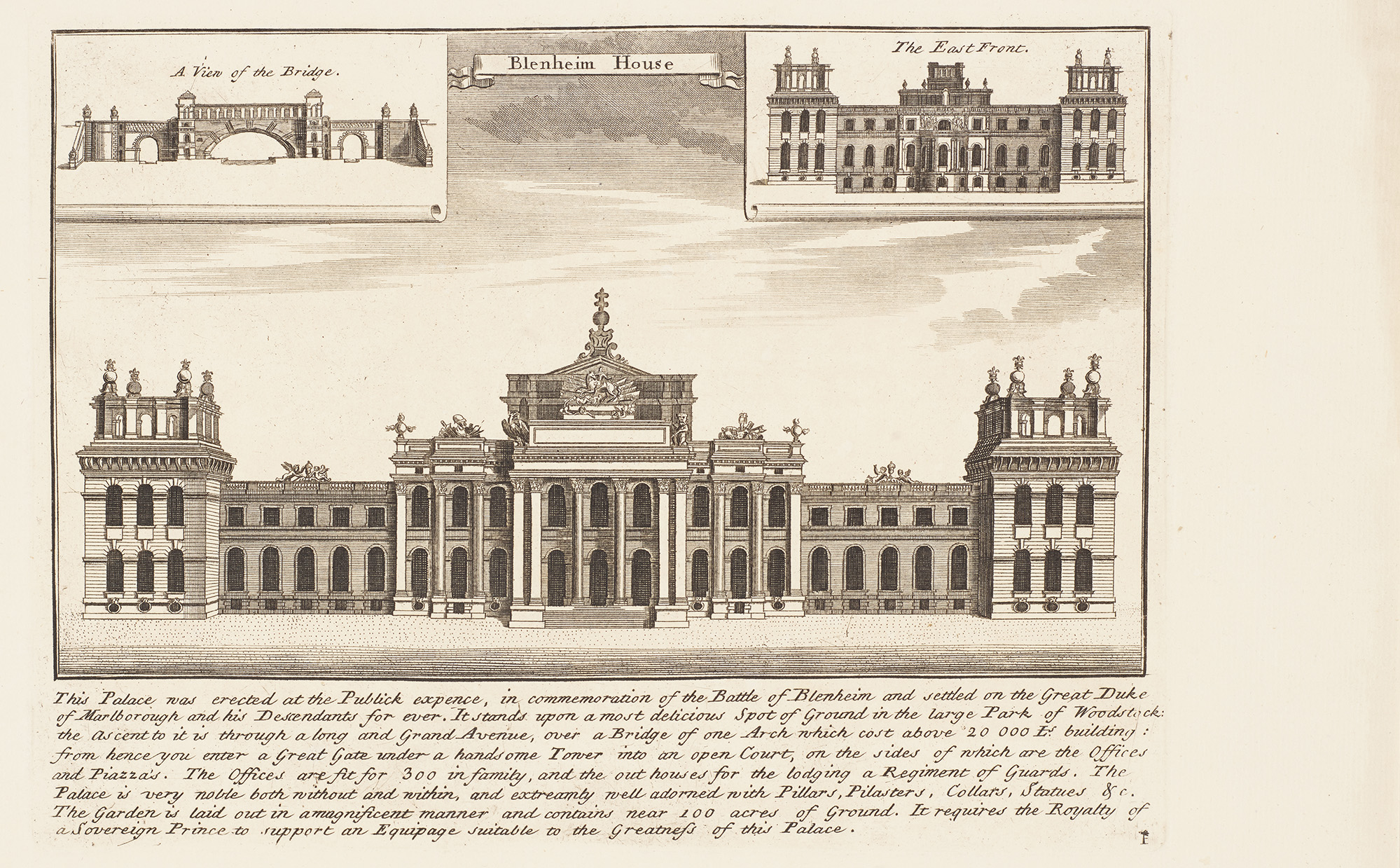
There are a lot of murals at Blenheim and we sort of mentioned the Saloon, but do you know how many there are?
There’s not that many murals, funnily enough. You’ve got the ceilings, the two ceilings in the Great Hall and the Saloon-
By Louis Laguerre, correct?
Yes, Sir James Thornhill and then Louis Laguerre. Sir James Thornhill was supposed to paint the one in the Saloon but Sarah having her sharp financial hat on decided he was too expensive, said, now you’ve already ripped me off doing the ceiling in the Great Hall, so I’m not going to use you for the Saloon, so she had Louis Laguerre. Yes, [inaudible 00:33:12], as well as Allegro scenes on the ceilings, but mostly I think one of the things we’re well known for are the wonderful tapestries and they’re depicting the various battles. In all the state rooms and some of the other rooms, we’ve got a series of tapestries and they really are, I think, some of the finest examples of tapestries I’ve ever seen, so very special.
Which one is your favorite?
I don’t really have a favorite actually because they’re all so interesting because you just can’t believe the detail of these things. Actually, one of my favorite is the Battle of Lennon. John is on his horse, his white horse, and there’s a dog running behind him. They weave these tapestries from the cartoons which had been drawn in advance, and evidently somebody didn’t get it quite right because they had given the dog horses hooves rather than paws.
That’s probably one of those mistakes that was caught too late.
Yeah, it’s funny because nobody ever notices unless you pointed out to them.
That’s hilarious. Obviously, as you mentioned earlier, there’s a wonderful chapter called Logistics in the book, which is about life sort of below stairs, and today obviously because of shifting political topics, but also obviously television like Downton Abbey and Upstairs, Downstairs and all that kind of stuff, and doing the research for the book, did you discover anything about this side of Lennon that surprised you? Or what do you think that some might surprise other people?
I mean, I don’t think I necessarily discovered huge things that I didn’t necessarily know, although it was quite interesting going through one of our attics, we do have a huge amount of old liveries and it was surprising how many liveries outfits we still own, whether it was for the horse, the Coachman or the stable liveries or the upstairs, you say Upstairs, Downstairs. I guess, for other people, what is incredibly interesting is how many little secret staircases there are, which are hidden off rooms, which gave the staff access up to the bedroom floor. Whether in those days they were to be bringing the hot water for people to bathe, or coming to help them get dressed for dinner in their fifth outfit of the day, change of outfit for the day. It’s really all those sort of things. Also, I suppose the areas where the staff used to live, there’s one area which is called Housemaids’ Heights, so there was very much a division between the men slept and where the ladies slept.
Yeah. In terms of it is a house that has gone through so many periods of refurbishment and redesign and upkeep, to give someone the understanding of the scale of that effort, there are foundations that support it, tell us about that. What is the state of the house compared to so many of the other historic estates in the UK?
I think we have a very efficient and good management team in place, all of whom are passionate about Blenheim and doing the right thing for Blenheim. And so over the last, well, it started while my father was still alive, but it’s been carrying on at a pace since he died. I think the frustrating thing for me is that so much of the money is spent behind the scenes. So we all appreciate what’s been done. I know it has to be done, but actually, the general public don’t see it and don’t necessarily appreciate it. So whether it’s rewiring, putting in new heating systems and new pipe work, new radiators, very sophisticated, high-tech fire security, so compartmentalizing areas, very sophisticated sprinklers and fire alarm systems.
Our next huge project is we have to redo the roof over the Great Hall and the saloon, which is going to be a two-year project, hopefully starting next year and going to cost around 10, 12 million pounds.
Oh, gosh.
It’s a horrific amount of money to spend on something that nobody’s particularly going to notice, but it has to be done. And if it’s not done, then those wonderful murals and ceilings, which you talked about earlier, will actually crash to the ground.
So there’s a lot of stuff that goes on behind the scenes, which I find frustrating being in my role because there’s a lot of areas which do need proper redecoration. So new curtains, upholstery, new upholstery and endless things. And the budget just doesn’t stretch enough to go on that. One of my great passions, which I’m hoping to do in the next few years is restore a magnificent state bed, which was designed by a very famous furniture company called Ince and Mayhew. And it was commissioned by the fourth Duke for when George III came to stay.
And nobody’s ever seen this bed. It’s been sitting in pieces in various attics at various stages. And so I really want to restore that and put it back, either in one of the state rooms or in one of the rooms upstairs so it can be on display to the public.
And you mentioned that you guys had more liveries than you knew you had. And you talk about this furniture that’s been disassembled. What is the sort of storage situation from hundreds of years of history? What is kept and stored and how is it stored?
Well, actually probably enough, there’s not as much as you would think there would be because I think we do tend to try new things if we’ve got them. So there’s not a huge amount stashed away. There’s quite a lot of old clothes and costumes and things which have not really of much use to anybody. But in terms of furniture and things, there’s not a lot. I think I’ve used everything that’s more or less usable. We do have still fabrics and things to use, but often what’s good is to have some sort of template from which to work from so you can get something reproduced.
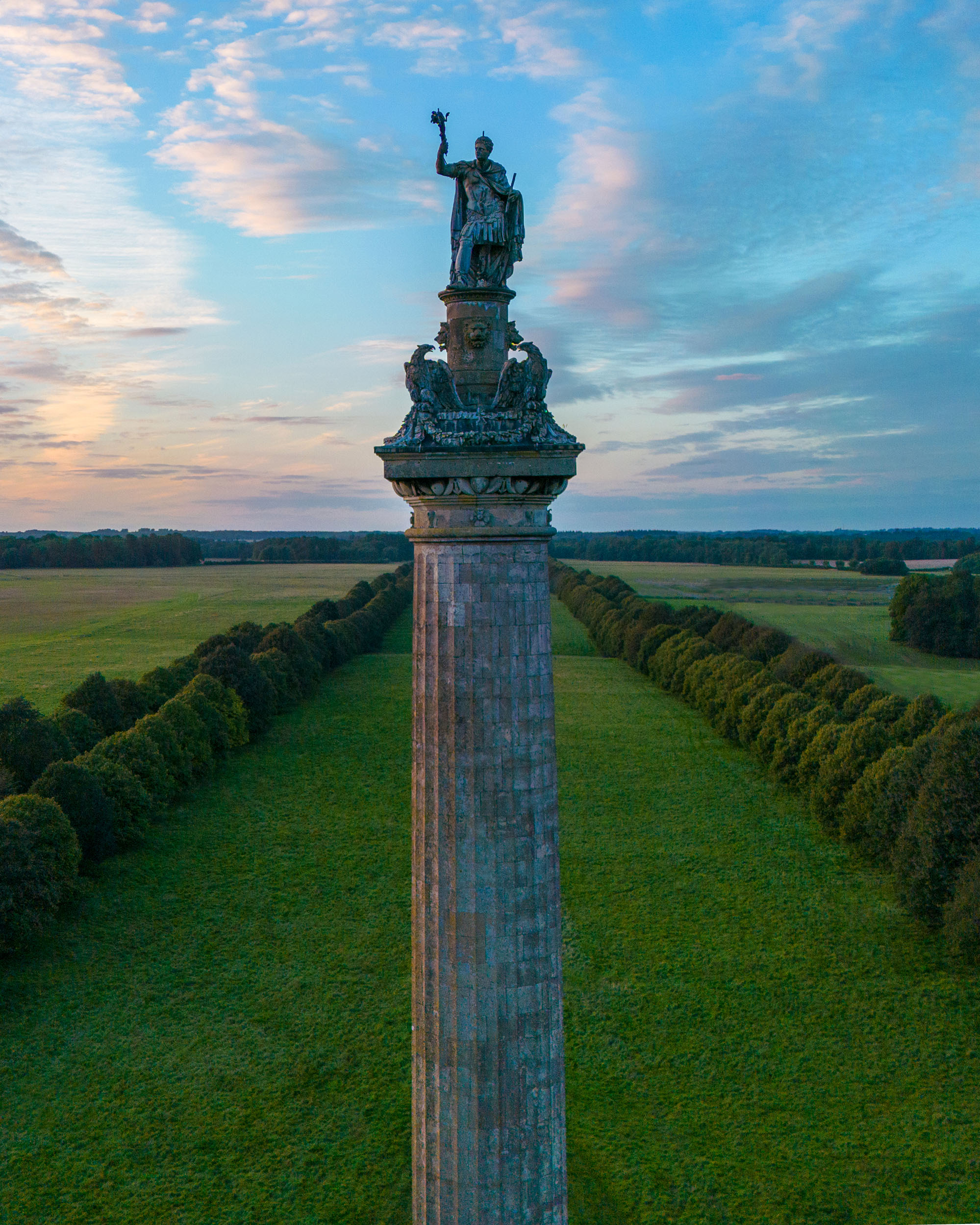
And I’m curious just because this is a topic that’s come up in some other episodes I’ve done with splendid homes such as this. Are there any ghost stories?
Blenheim is not a sort of ghosty place. I know I saw a ghost very soon after my father died, so it wasn’t really a ghost. It was him. It was his spirit basically just whisking by and saying, “Just carry on with the good work, you lot. I’m watching over you.” Because he was a stickler. He was an absolute stickler for detail and running things properly. But I have never seen a ghost of Blenheim otherwise. No.
Well, even seeing one is more than I’ve ever seen. Where did you see him?
It was funny. We had an American friend visiting and he’d come over for tea and he was going to be coming back later that year to shoot. And we were just, me and my brother, we were giving him tea outside the pantry. It’s a nice little area to go and sit and have an informal tea. And I disappeared and went to the bathroom.
And the bathroom is located right outside my father’s study, which is a beautiful panel room, which nobody ever goes in. It was his sort of sacrosanct space. And you only went in there if you were invited to go in there. And to this day, we haven’t cleared it out since he’s died and we have to. And as I came out of that bathroom, this figure whisked past me and I knew it was him. He had a very willowy shape, very distinctive walk and look. He went round back to the corridor where I was going, so I sort of took a big gasp breath, went outside to look down the corridor. Nothing there. It was very weird.
Oh gosh.
Very weird.
Wow. Okay. And if someone visited for the time, what would your personal bit of advice be for a tourist?
I think you just want to take your time. Just don’t try and rush it like a lot of the Chinese do. It’s a sort of tick box thing for them. They come, they go round just filming everything on their iPhone and then they go. But there’s so much to see, whether it’s the park, the gardens, various events we might have on at the time. You want to make a whole day of it and book your time, book your space and just enjoy it as a leisurely space. Because a lot of people would come and they wouldn’t even necessarily know that Churchill was buried nearby. But it’s walking distance. It’s a lovely place to go.
And at the moment… We always have something interesting on. At the moment, we’ve got an exhibition called, it’s Icons of British Fashion. So various British designers are displaying the history of their fashion enterprise in the state rooms. And in fact, it’s really spectacular. You are looking at the state rooms through a different view, but it doesn’t really matter. They’re just as wonderful.
If you had a spare day and… Well, first of all, is Blenheim open to the public all year round or mostly year round, or is there a-
Yeah, yeah, nearly every day. When some of the winter months, it’s not completely open or there’s certain parts of it and there’s often a lot of cleaning and restoration that goes on sort of January, February time. But essentially it’s open every day.
Sometimes we have to close for filming. We have quite a lot of filming that takes place there. And so, just for safety reasons, it has to be closed. But pretty much everywhere. I think what’s going to be… We’re trying to plan at the moment doing this roof restoration because it’s going to be very disruptive, not only to people not wanting to rent the place for commercial and private reasons, because it’s going to look pretty ugly with scaffolding around the whole center of the house going both sides north to south and over the top. So what we’re trying to configure now is perhaps having some sort of visitor attraction so that people can actually go up onto the roof, onto the scaffolding and get these magnificent views and perhaps have a restaurant up there or something. Just so if we’re going though all this effort having this scaffolding up for two years, you might as well make use of it and have a lovely visitor’s attraction.
And if it somehow for some reason were to be closed and you had your run of the house for an afternoon and you wanted to just spend some time alone to your own thoughts, which spot in the house would you personally choose?
I love going on the roofs, which you’re not allowed to do really, but I can go there and you can go up there and people wouldn’t necessarily know you are there. But certainly as children, we used to go up onto the roofs because it’s just-
Oh, gosh. I’m sure you were forbidden for doing so.
We weren’t really allowed to, but in those days you didn’t have health and safety issues like you do now.
Right. If you fell off the roof, you fell off the roof.
Exactly. That’s your fault. So yes, I love going up on the roofs and just… It fascinates me as to how in those days, someone like John Vanbrugh and Nicholas Hawksmoor, they had the foresight to build these places and they knew where to put the chimneys, they knew where to put the drainage, the pipe work for the rainwater pipes. And it’s just mind-blowing really without any proper plans and measurements and everything done by hand and horse-drawn carriage. Probably today, with all the sophisticated equipment that everybody has, they wouldn’t get it right anyway.
And now that you sort of look back at the, I am assuming the book is completely complete now, is there a favorite image or chapter in it now that you look back that you really enjoy?
I think inevitably for me it’s the interiors, because it does go into… It probably made me actually focus more on areas of the house that I slightly took for granted, like the beautiful plaster work. I suppose I’ve never took the tapestries for granted, but it’s just sense of analyzing rooms and their details much more carefully than one normally would. So yes, definitely the interior section.
Thank you to my guest, Henrietta, as well as to everyone at Rizzoli for making this episode happen. The editor of The Grand Tourist is Stan Hall. To keep this going, don’t forget to visit our website and sign up for our newsletter, The Grand Tourist Curator at thegrandtourist.net. And follow me on Instagram @danrubinstein. And don’t forget to follow The Grand Tourist on Apple Podcasts, Spotify, or wherever you like to listen and leave us a rating or comment. Every little bit helps. Ta-ta!
(END OF TRANSCRIPT)
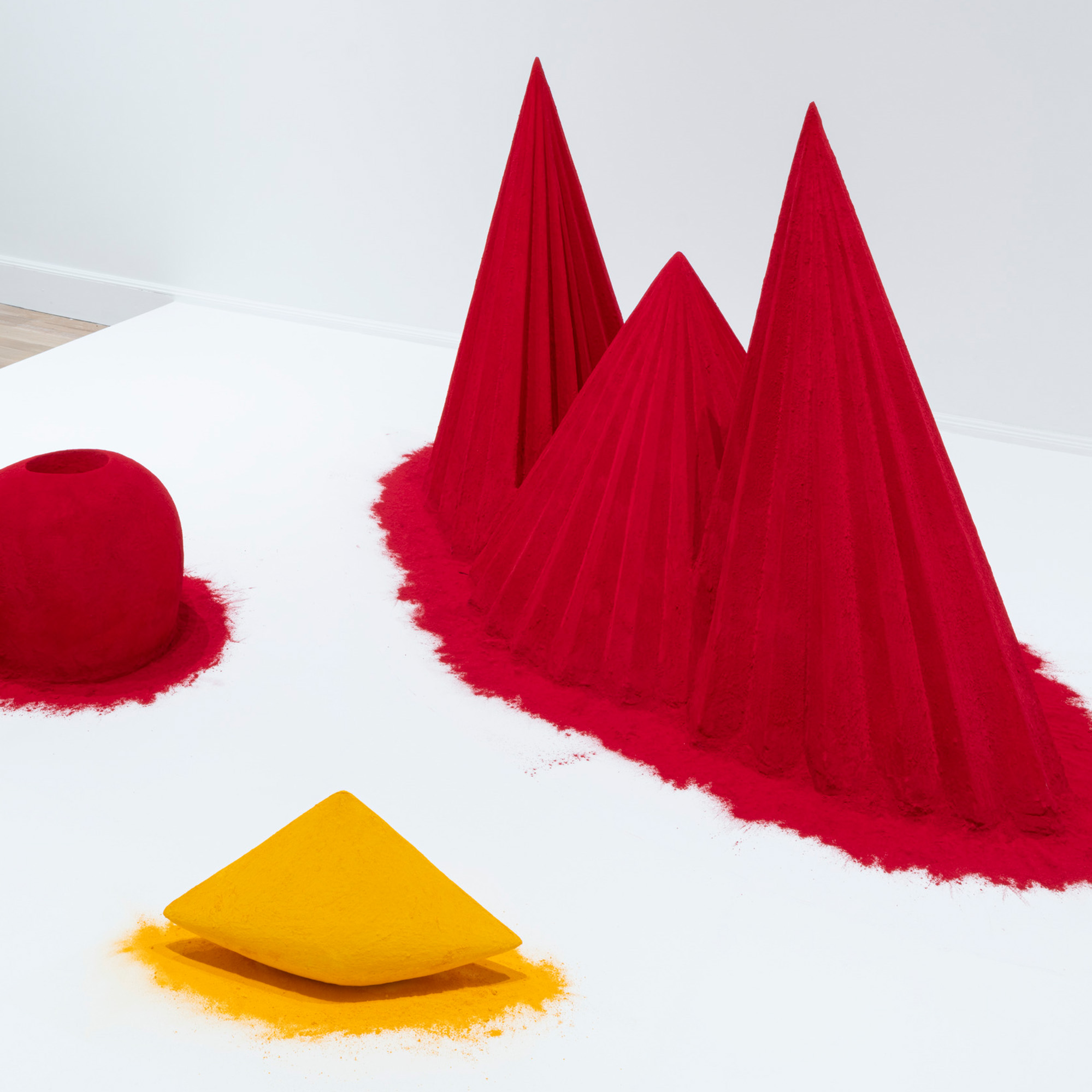
Anish Kapoor's early pigment sculptures on show in New York. Plus, a gallery looks back on 40 years of seminal art and more art highlights.
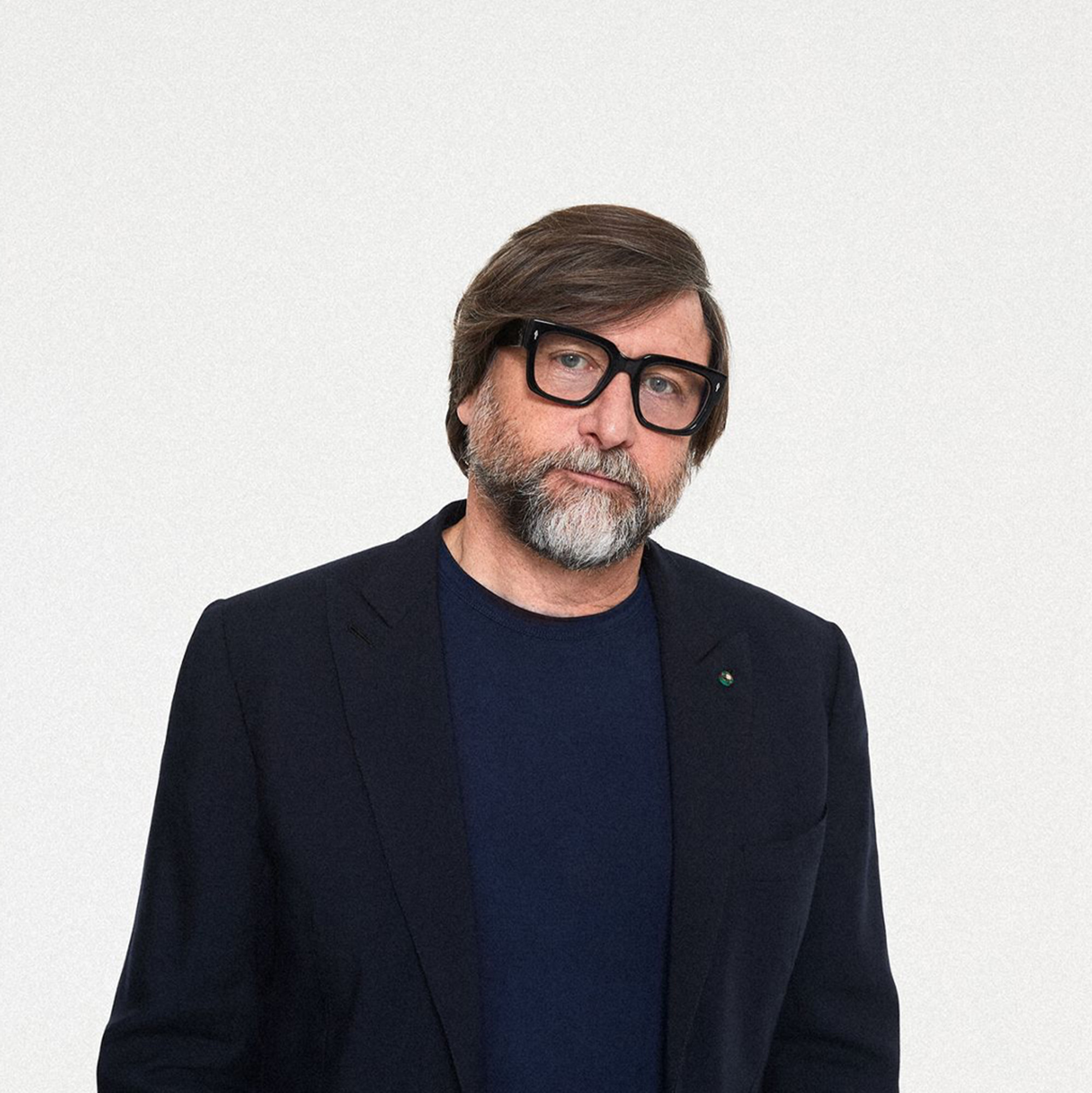
Herno's Claudio Marenzi knows a thing or two of creating garments that blend incredible design with legendary performance. On this episode, Dan speaks with Claudio about how the fashion universe in Italy has evolved, his hopes for the next generation, and more.
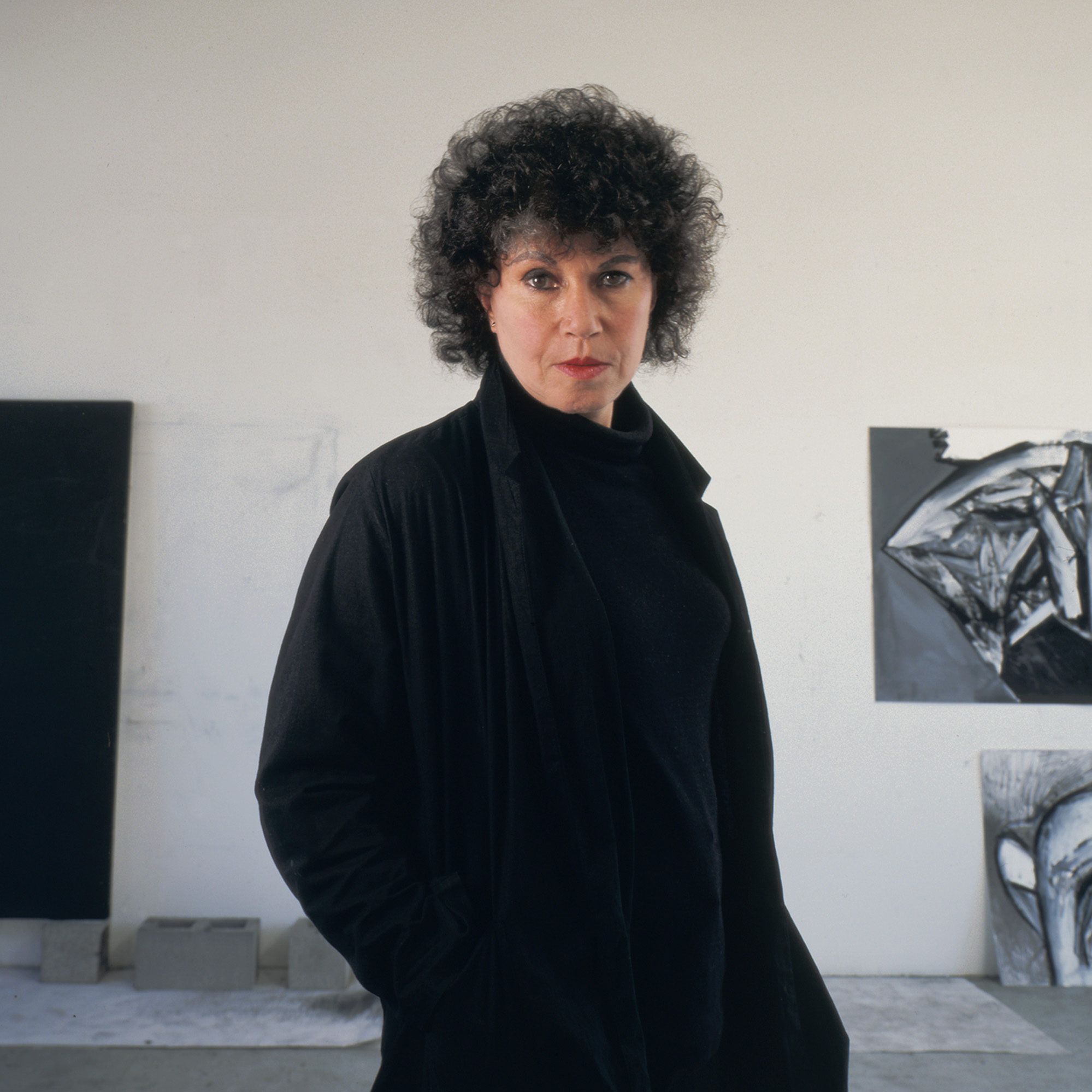
The brilliant late career of Jay DeFeo. Plus, America's forgotten painter, solitude on film, and more.